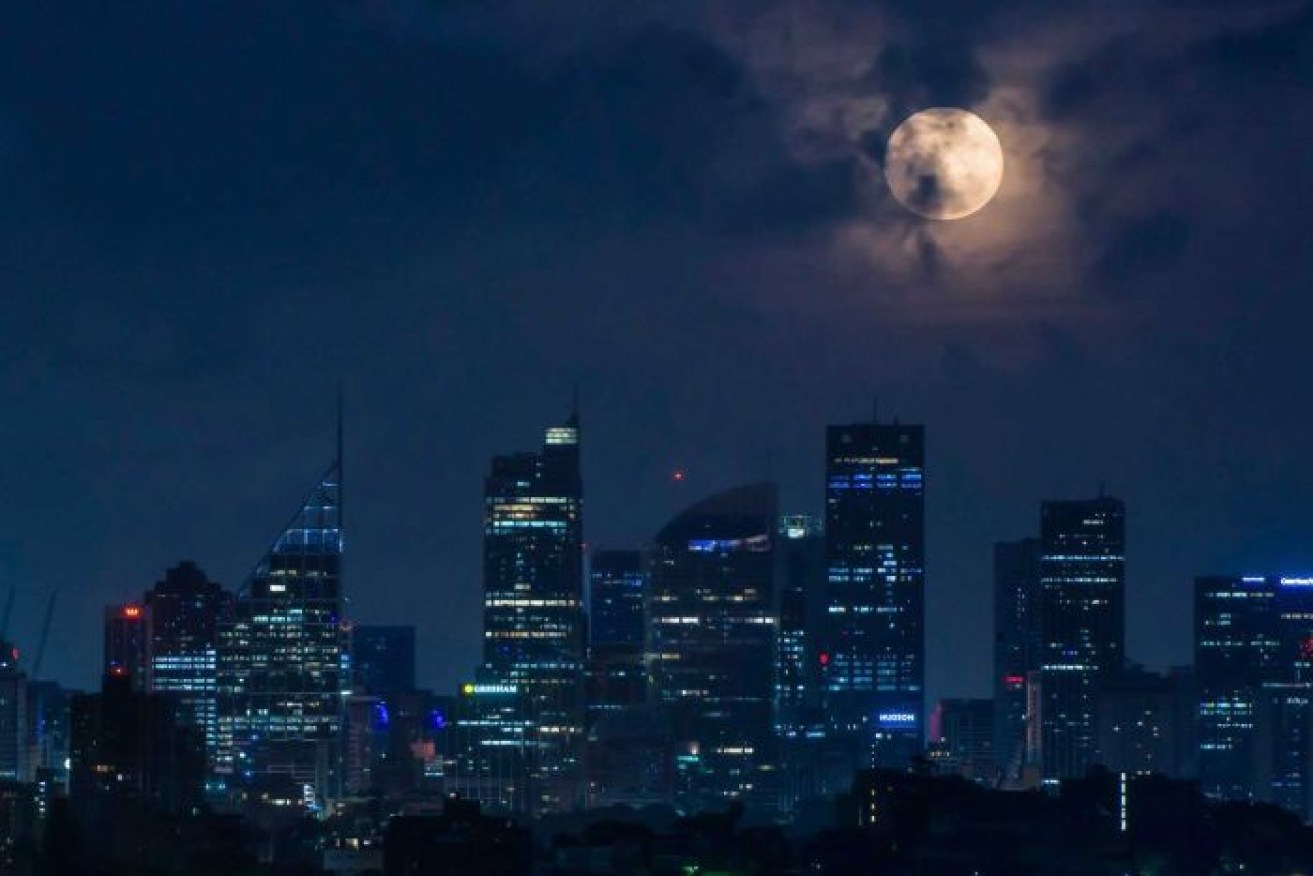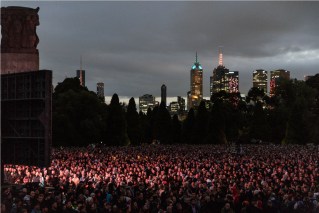April sky guide: A ‘super pink Moon’ and a cosmic ladder of planets

April's full Moon will be a 'super Moon'. Photo: Getty
Spending time outside is much harder now, but if you have a backyard or a balcony you may be able to catch this month’s ‘super pink Moon’ as well as a beautiful cosmic ladder.
In the northern hemisphere, the April full Moon is named after the first flower of spring – pink moss or phlox.
Also known as the sprouting grass Moon, fish Moon, hare Moon, egg Moon and paschal Moon, this year it falls on April 8.
Each month, at the point when the Moon is fully lit up it is exactly opposite – or at syzygy – with the Sun.
And since this is also when the Moon is closest to Earth (perigee) this month at a distance of 356,907 kilometres from Earth, this means we have what is commonly called a super-Moon.
Of course, astronomers prefer to go by a more scientific term describing the phenomenon as a perigee-syzygy moon.

The size of the April 2020 full Moon at its closest point to Earth versus the October 2020 full Moon at its farthest point. Photo: Ian Musgrave
What is a super-Moon?
The definition of a super-Moon – a description first used by an astrologer – is pretty fuzzy, said Ian Musgrave, an amateur astronomer.
“The super-Moon is the perigee-syzygy Moon where the full Moon and perigee are almost on top of each other,” Dr Musgrave said.
While some people say the Moon is super if this occurs within 24 hours of the exact time when the entire face of the Moon is lit up, others class any full Moon closer than 367,607 kilometres as a super-Moon.
By those definitions we have between one to four super-Moons each year. The last one was in March (aka the super worm moon).
The best time to see the full Moon will be around 11pm on Wednesday, April 8 when it is high in the sky (and about seven hours after perigee).
The Moon will look bigger when it is near the horizon earlier in the evening, but that’s not because it’s super, it is an illusion.
In reality, you have to have an eagle eye to spot the difference between a super-Moon, a normal full Moon, and a mini-Moon (when the full moon is the farthest away from Earth such as the one coming up in October.)
But it will still look very pretty in the night sky.

The crescent Moon will pass by Jupiter, Saturn, Mars and Mercury. Photo: Stellarium/Ian Musgrave
Cosmic ladder for early birds
About a week after it is at its fullest, the Moon appears as a sliver in the early morning eastern sky just before dawn.
This also just happens to coincide with a line-up of bright planets: Jupiter, Saturn and Mars and little Mercury.








